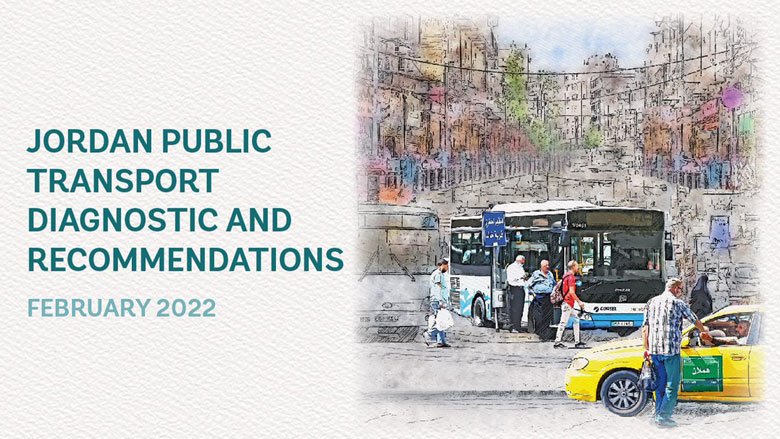The Jordan Public Transport Diagnostic and Recommendations report identifies and addresses key challenges and constraints that are impeding the achievement of an accessible, effective, safe, affordable, and sustainable public transportation system in Jordan.
Some of the key challenges facing the sector include: (i) poor coverage and low frequencies of public transportation services; (ii) lack of the integration of services and fares leading to long commuting times and high transport costs; (iii) low quality of services that tend to be unreliable, perceived as unsafe, especially by women; and (iv) lack of universal accessibility to services and opportunities. Furthermore, the Jordanian public transportation system is fragmented at both the operational and institutional levels.
Women make up only one-third of the passengers on public transport in Jordan, and less than 50% use public transport. Poor public transport makes it harder for women and young people without cars to work. Women’s low participation in the country’s labor market means Jordan’s economy can lose about US$65 million a year in productivity by 2030. The report highlights that for inclusive growth and employment, Jordan’s residents, including women and the youth, need efficient, reliable, safe, and cost-effective public transport.
The estimated cost to Jordan of transport-related inefficiencies was about US$3 billion a year, or at least 6% of GDP, without counting its impact on women’s participation in the labor force. Investments in public transport are enablers to enhancing the sector. These investments should align with reforms to ensure their success, expand their benefits, and enable economic growth and inclusion. Demand for mobility investments has been increasing over the past 15 years in Jordan, whose growing population is concentrated mainly in Amman.
However, higher demand has not been adequately met by the improved quality of public transport, resulting in low ridership and a shift to the use of private vehicles. Greenhouse Gas (GHG) emissions from Jordan’s transport sector are estimated to have increased to over 11,000 Gg of CO2 a year over the same time frame, costing the economy a staggering US$500 million to US$1,000 million per year. Lastly, the report provides advice and practical recommendations based on the public transport diagnostic and global good practices to address these challenges. While the Government of Jordan is moving in the right direction to enhance the quality of public transportation services, additional efforts are needed to reverse the long-term trend away from public transportation. Going forward, more efforts are needed to optimize bus systems in Jordan and extend the Bus Rapid Transit (BRT) network in Amman and other areas as cities continue to grow.
The report proposes six priority recommendations: (i) consolidating bus operators; (ii) integrating tariffs and operations; (iii) implementing Intelligent Transport Systems (ITS); (iv) developing a traffic demand management program that includes managing parking, restricting cars, and introducing congestion charges; (v) developing a Road Safety National Plan, as well as pedestrian and cycling masterplans; and (vi) coupling investments in public transport projects with urban renewal and development. Reforming public transport is essential for green growth and inclusion.
Investments in public transport, such as the BRT, can enhance the sector and should be coupled with reforms to ensure their success and expand the benefits to everyone.
- Jordan Public Transport Diagnostic and Recommendations (Full Report in a PDF format)
